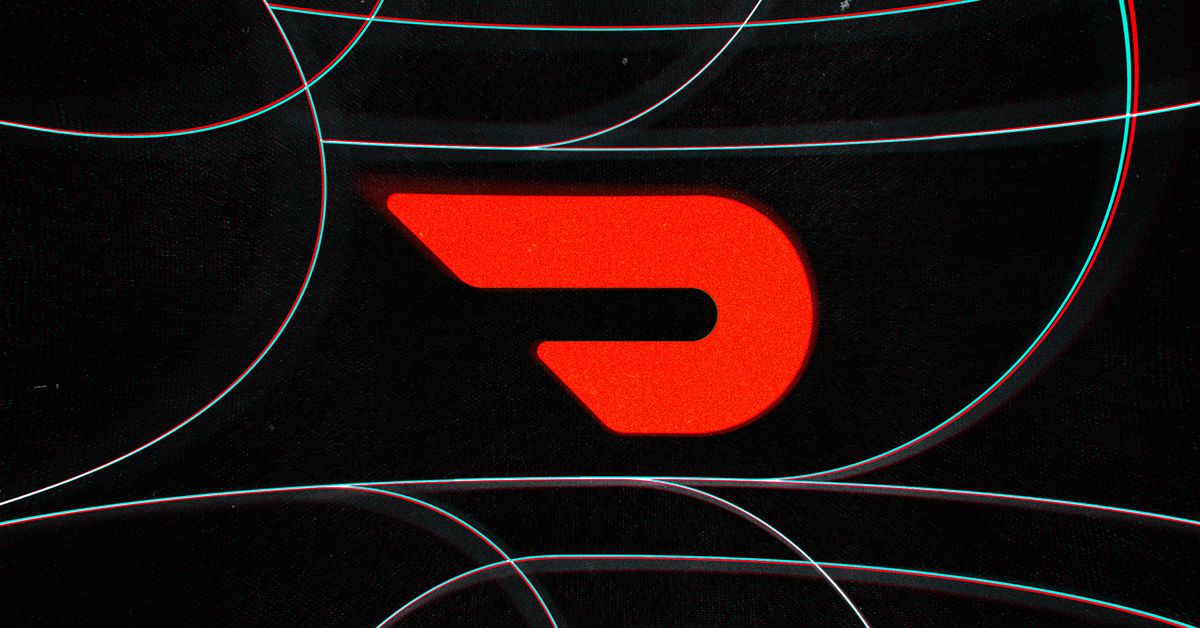The universe is a dangerous place. NASA just showed it’s possible to defend Earth against it.
The asteroid moonlet Dimorphos as seen by the DART spacecraft 11 seconds before impact. | NASA/Johns Hopkins APLHumanity now has the beginnings of a true defense against asteroids. At 7:14 EDT Monday night, something historic happened for the human...

At 7:14 EDT Monday night, something historic happened for the human species — and it took place more than 7 million miles from our planet.
NASA’s Double Asteroid Redirection Test (DART) spacecraft successfully collided with the asteroid moonlet Dimorphos, which circles the larger asteroid Didymos (hence the “double asteroid”). The 1,250-pound DART spacecraft hit the asteroid at approximately 14,760 mph — in the days to come, NASA scientists will pore over data to figure out how much Dimorphos’s momentum was changed by the collision, with initial estimates projecting that it moved 1 percent closer to Didymos.
So why is this a big deal? For one thing, successfully hitting an asteroid that is just 560 feet across — or about half the length of the Eiffel Tower — with a tiny spacecraft that was launched from Earth nearly a year ago is a triumph of extremely difficult astrophysics.
Up to the point of the collision, which was shown worldwide on NASA TV, mission controllers weren’t sure they would hit the target. So kudos to you, steely-eyed missilemen and women of the Johns Hopkins Applied Physics Laboratory (with help from NASA’s Jet Propulsion Laboratory)! You literally moved the sky!
Beyond the honor of our nation’s foremost space geeks, however, the DART mission represents the first time humanity has successfully shown that it might be able to directly protect itself from a major natural existential risk, which is about as consequential as you can get.
What once helped wipe the dinosaurs off the face of the Earth, and which might threaten us with extinction in the future, is now on watch. Humanity has the beginnings of a true planetary defense.
The universe is trying to kill you
Asteroids — should they happen to collide with your planet — can be very, very bad news.
About 66 million years ago, an asteroid that was between 6 and 10 miles wide slammed into the waters off the Yucatán Peninsula, near what is now Chicxulub, Mexico. The energy released by the resulting explosion had the force of 100 trillion tons of TNT, equivalent to 10 billion Hiroshima nuclear bombs. Mega-tsunamis swamped the surrounding coasts, and more than 1,000 cubic miles of vaporized rock were blown into the sky.
Thermal radiation from the hot air started fires around the globe. “It was like being inside an oven with the broiler on,” Brian Toon, an atmospheric researcher at the University of Colorado Boulder, told me for my book End Times: A Brief Guide to the End of the World.
A debris cloud filled with sulfur droplets suffused the atmosphere, blocking much of the sun’s heat and light from reaching the Earth’s surface. Global temperatures dropped by as much as 50 degrees Fahrenheit over land, and photosynthesis all but stopped.
All in all, it was a very, very bad day to be a dinosaur, or, for that matter, just about anything else living on Earth. More than 75 percent of the planet’s species would die out in the final — so far, at least — of the planet’s five great extinction events.
The good news is that asteroid collisions on the size and scale of Chicxulub are incredibly rare, and the chances of one happening in a given year, century, or millennia are very, very, very unlikely.
But they can happen, and even much smaller asteroids could do significant damage, especially if they hit near a heavily populated area. In 1908, a relatively small meteor, perhaps less than 100 feet in diameter, exploded over the Earth’s surface near Tunguska, Siberia. (Asteroids are asteroids when they’re in space orbiting the sun, meteors when they hit the Earth’s atmosphere — where most burn up as shooting stars — and meteorites should they make it to the surface.)
The energy released in the Tunguska explosion was equivalent to 15 megatons of TNT — 1,000 times more powerful than the Hiroshima bomb. The shock wave flattened trees over 830 square miles. Fortunately, then as now, trees are the main occupants of Siberia, but if a Tunguska-size meteor exploded over a city the size of New York, millions could die.
Once the geologists Walter Alvarez and his father Luis W. Alvarez in 1980 discovered the underwater Chicxulub impact crater and identified it as the likely culprit behind the dinosaurs’ extinction, it was clear that space impacts could pose an existential threat to life on Earth. In July 1994, astronomers witnessed the comet Shoemaker-Levy 9 collide with Jupiter, making a visible dent in the gas giant and driving home the danger of space objects.
As the astrophysicist Neil deGrasse Tyson once said, “The universe is a deadly place. At every opportunity, it’s trying to kill us.” Which raises the question: What are we going to do about it?
Watching the skies
Even before the Shoemaker-Levy 9 collision, concern about the threat posed by near-Earth objects (NEOs) like asteroids had begun to mount. In 1991, a House bill directed NASA to study impact risk and defense — how to track them and how to stop them.
But when then-Vice President Dan Quayle endorsed an idea for the federal government to buy telescopes to track potentially hazardous asteroids and use modified Strategic Defense Initiative antimissile weapons in orbit to destroy them, the concept was largely laughed off. (In defense of the critics, Quayle was considered a deeply unserious politician, though by today’s standards he’d basically be George Washington.)
The sight of Shoemaker-Levy 9 blowing a hole in the biggest, baddest planet in the solar system, however, had a sobering effect. In 1998 — not entirely coincidentally, the same year Hollywood went asteroid-wild with Deep Impact and Armageddon — NASA established its NEO Program and dramatically scaled up its participation in the Spaceguard Survey, which was tasked with discovering and tracking at least 90 percent of potentially hazardous NEOs larger than 1 kilometer (0.62 miles).
These were the rocks that could theoretically kill a city or even the human species if they were large enough — and if they hit at the right time and the right place.
Such planetary surveillance has been a resounding success. Scientists believe they have identified 95 percent of potentially dangerous NEOs, and none are on a collision course with Earth. (Because asteroids, like other heavenly bodies, follow predictable paths through space, their movement can be predicted with high accuracy decades into the future.)
But there’s always a small chance that we might miss a big one, and only about an estimated two-thirds of asteroids above 140 meters (459 feet) in size have been identified and tracked. Obviously we can’t move the Earth if one is discovered to be on a collision course. But Newtonian physics says if we could exert enough force on the asteroid, we could nudge it like a pool ball and move it out of the way. We just had to try.
The office of planetary defense
Enter the DART mission. NASA selected Dimorphos — which poses no threat to Earth — as a target because its tiny size made it possible that even a small spacecraft, if it were moving fast enough, could change its orbital trajectory.
(The bigger the asteroid, the more force you would need to exert on it. Which is something Hollywood doesn’t always get quite right — scientists once calculated that the bomb Bruce Willis and his brave band of roughnecks/astronauts used to blow up a Texas-size asteroid in Armageddon would have needed at least 50 billion megatons of kinetic energy, a billion times more powerful than the biggest nuclear bomb ever built. So Armageddon got that one wrong, along with the idea that it would be easier to teach oil drillers to be astronauts than astronauts to be oil drillers, which even Ben Affleck realized was a mistake.)
“We’re embarking on a new era of humankind, an era in which we potentially have the capability to protect ourselves from something like a dangerous, hazardous asteroid impact,” Lori Glaze, director of NASA’s Planetary Science Division, said after the successful mission.
There is a big difference between deflecting a 560-foot asteroid and one big enough to plausibly threaten humanity. DART, though, shows us that this method can work, which takes us one step closer to permanently retiring the risk of asteroids.
Humanity faces a rising number of existential threats, and unfortunately not all of them can be defeated by hitting something really, really hard. But at least we’ve demonstrated that with nothing more than watchfulness, math, and a SpaceX Falcon 9 rocket — oh, thanks, Elon Musk — we can protect ourselves from a universe that often seems to want us dead.
A version of this story was initially published in the Future Perfect newsletter. Sign up here to subscribe!
Correction, 1:50 pm: A previous version of this article misstated who led the DART mission. It was led by the Johns Hopkins Applied Physics Laboratory.
Now is not the time for paywalls. Now is the time to point out what’s hidden in plain sight (for instance, the hundreds of election deniers on ballots across the country), clearly explain the answers to voters’ questions, and give people the tools they need to be active participants in America’s democracy. Reader gifts help keep our well-sourced, research-driven explanatory journalism free for everyone. By the end of September, we’re aiming to add 5,000 new financial contributors to our community of Vox supporters. Will you help us reach our goal by making a gift today?

 Koichiko
Koichiko 































